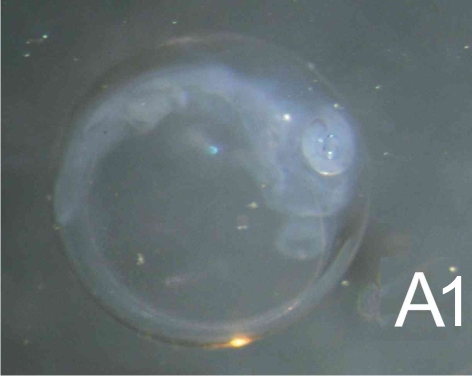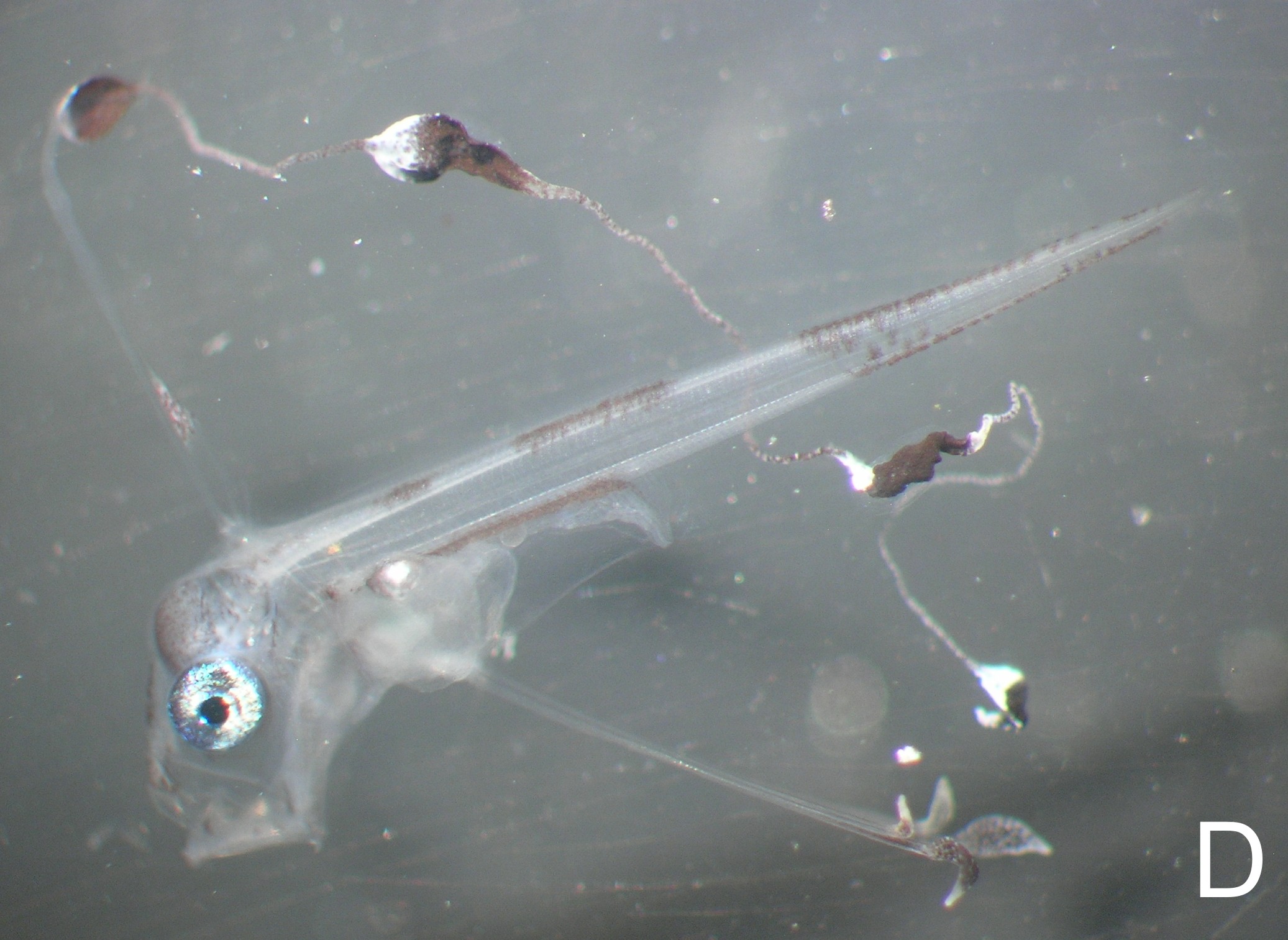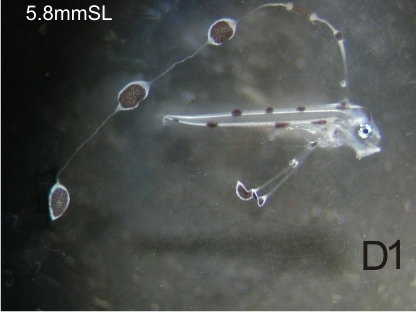Lampridiformes: Regalecidae: CD I A1
Regalecus glesne Ascanius, 1772
Oarfish






Egg diameter in µm |
Number of oil globules |
Diameter of oil globule in µm |
Yolk texture |
Perivitelline space |
Position of oil globule at hatch |
Gut length at eye- pigment stage |
Myomeres |
2740-2950 |
0 |
N/A |
segmented |
narrow |
N/A |
50% of NL |
ca90 |
Egg: This egg sometimes appears “pink and furry” (Plate A), and close examination indicates it has a fine carpet of hairs on the chorion, but other eggs have a clear, glassy chorion (Plate A1). As the embryo develops, the black pigmented expansions on the dorsal finfold thread can be seen through the chorion (B). The egg takes up to 12 days to hatch (24°C). Unfortunately in captive conditions the egg often fails to hatch.
Larva: At hatching the impressive larva has well developed eyes and a functional mouth (C). Myomeres are very fine and difficult to count in the larva, but appear to be about 90. Note the additional “finger” at the tip of each elongate pelvic fin ray, which has been seen in several specimens. C: NH (9 days PC).
This egg was uncommon, which is not surprising as regalecids are open ocean fishes, and rarely seen (Heemstra 1986). Nevertheless my plankton samples have yielded, on average, 2 eggs per year. Ten larvae hatched from these eggs, have been barcoded, and match the barcode of several adult R. glesne from New Zealand (BOLD). Of these 10 eggs, 8 were recorded as having a pink and furry chorion, while 2 were recorded as smooth with a red sheen. Another egg (DSLAR565-09), described as pink and furry (HIA2), has matched Zu cristatus ( BOLD). This larva is shown in D1 above. It has a lower myomere count of about 65.
Two further eggs, with a smooth red-sheened chorion (HIA2A), have hatched into larvae with long threads from both the dorsal and pelvic fins, but lacking the black leaf-like expansions of Regalecus. These two larvae (DSLAR508-09 and DSLAG722-10 in BOLD) have matched several Lampris guttatus adults from Australia (BOLD). However, they do not match the barcode of a Lampris guttatus adult collected off Durban (TZMSA442-04 ADC117.1-1 in BOLD), which does match other adult L. guttatus from Australia (BOLD). It appears there are two species under the name Lampris guttatus in the southern hemisphere, and both are present in our waters.


The few eggs collected, suggest it is a winter and spring spawner (blue graph), with 81% in offshore samples of the Park Rynie linked samples, a little low for a mesopelagic oceanic fish. But the egg takes up to 12 days to hatch, increasing the chance of some being driven onshore. See Section 7.3 and Table 1 of the Introductory Notes, for more information on the linked samples.
linked samples |
Offshore |
Inshore |
Eggs |
39 |
9 |
Hits |
25 |
8 |